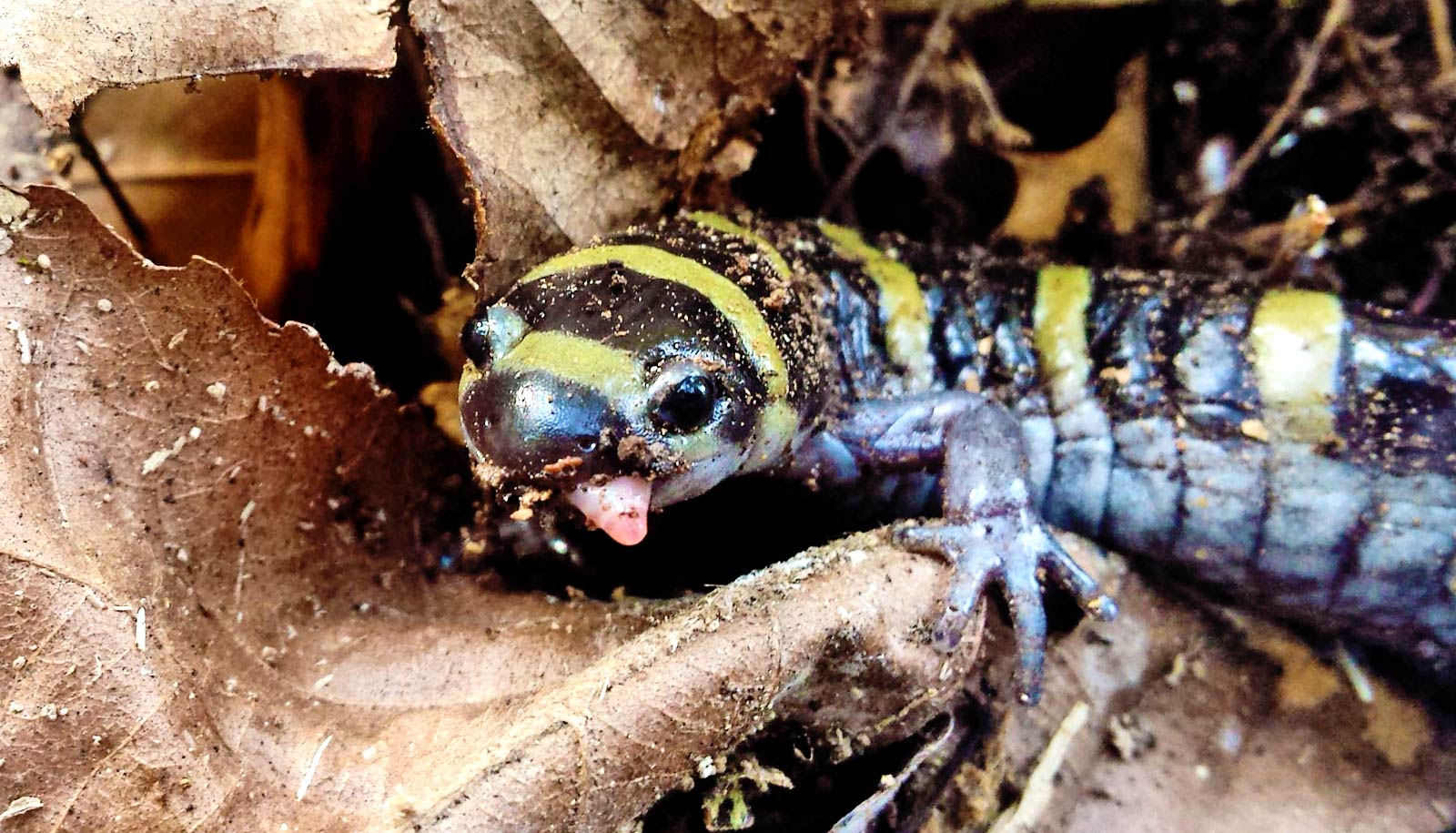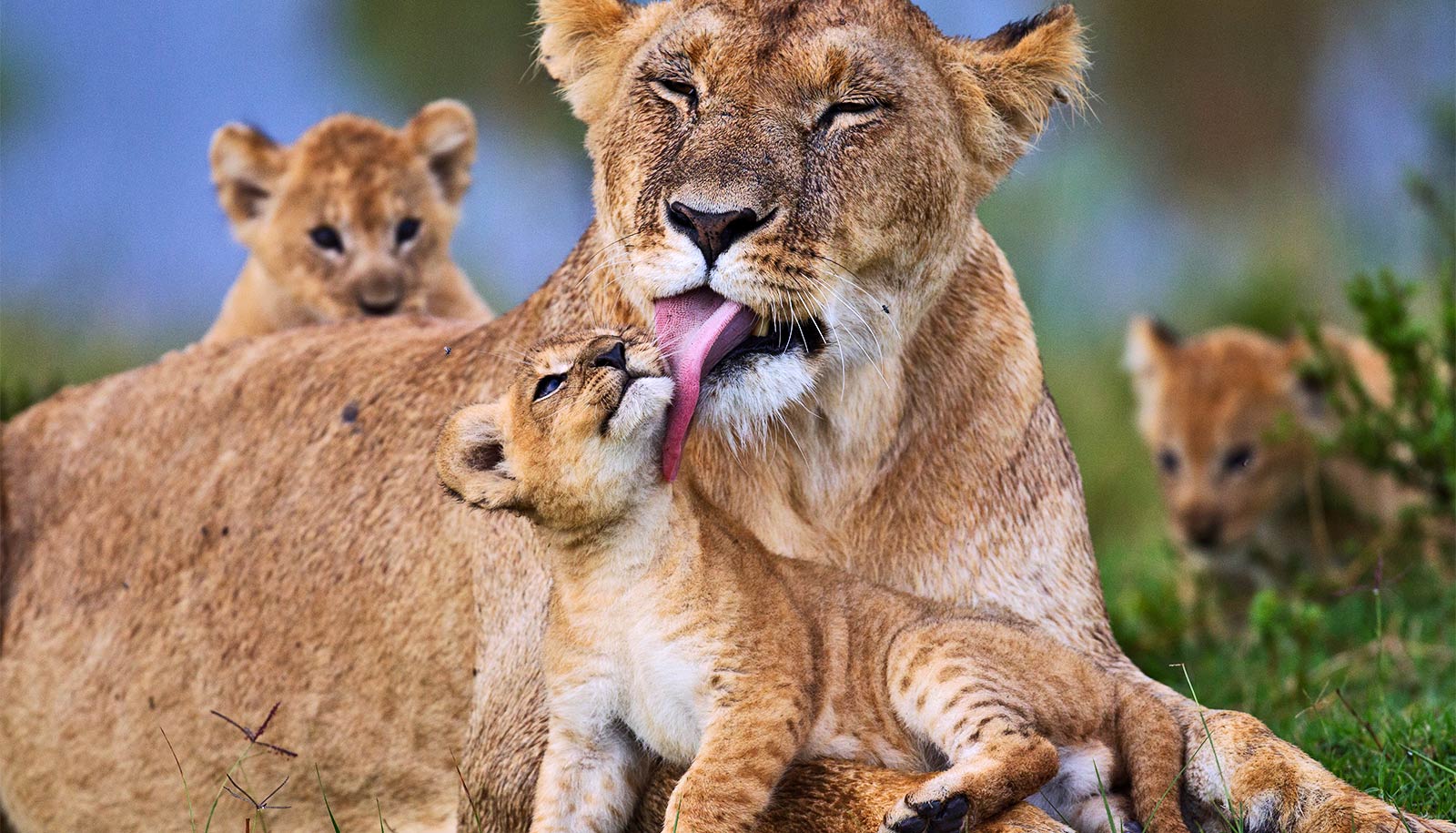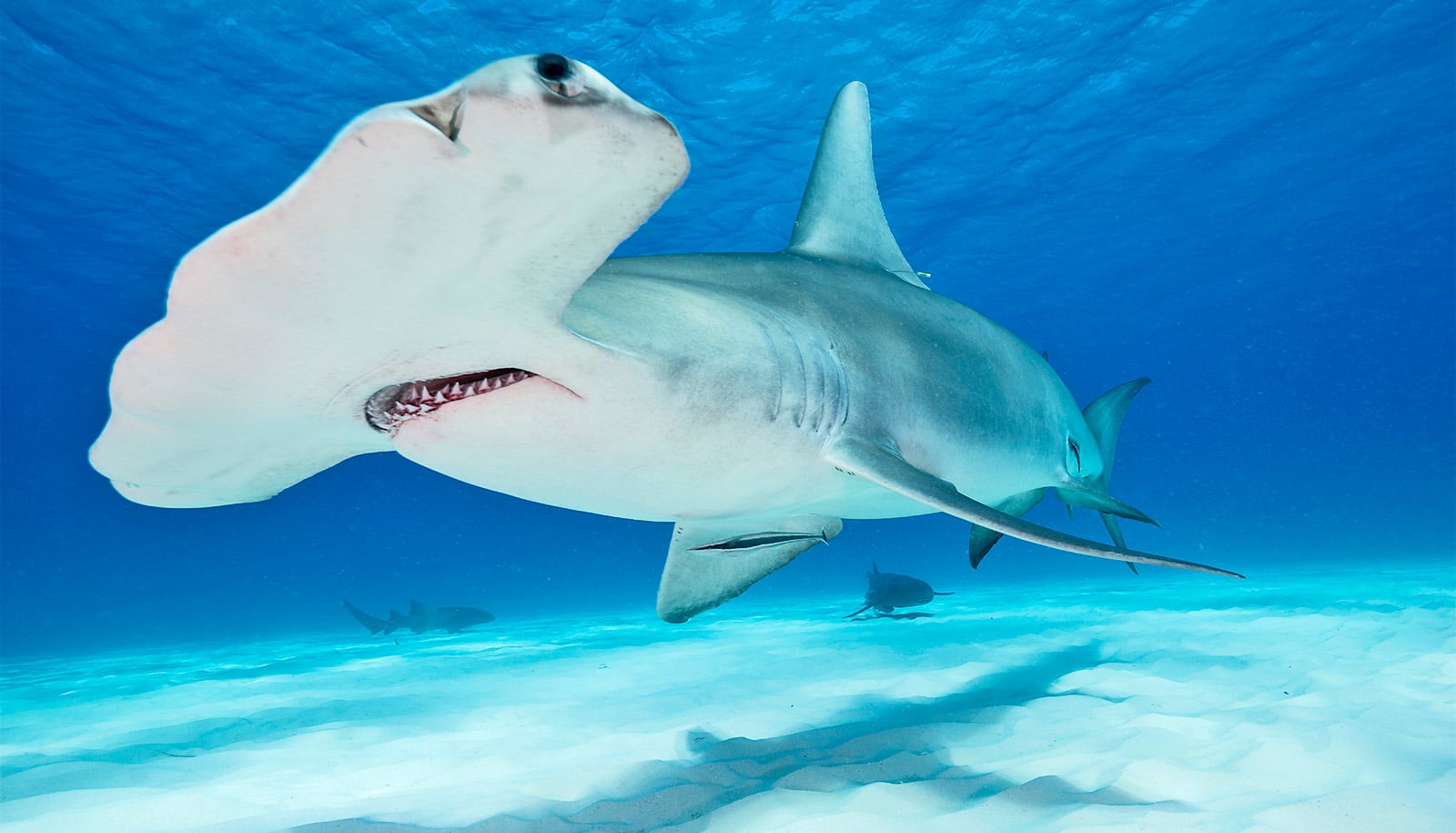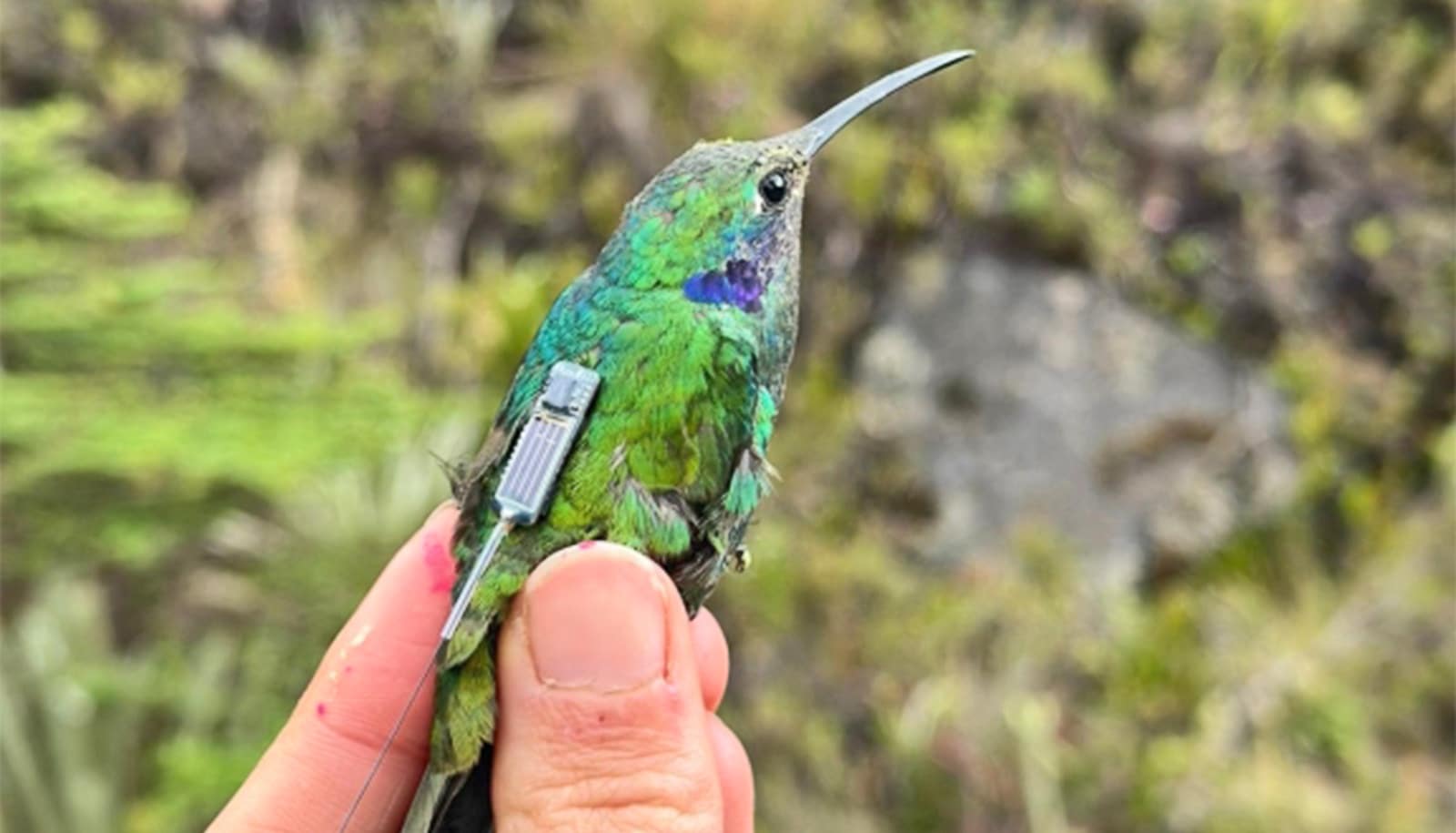When salamanders breed may matter more than the landscape obstacles they face, research suggests.
Salamanders face increasingly dangerous treks as the space between the ponds where they breed and their non-breeding habitat widens.
Knowing the patterns salamanders use to move back and forth could lead to better forest management and conservation strategies, researchers say.
“Salamanders serve as vital links in forest food chains, and their population size and recovery from major disturbances can help predict the health of forest ecosystems,” says Jacob Burkhart, a graduate student in the biological sciences division at the University of Missouri and lead author of the study in Ecology and Evolution.
“It’s crucial that we have a better understanding of how salamanders move, or disperse, across their landscape as well as what factors encourage or discourage their movement in order to make sound decisions about managing their populations and the forests where they live.”
Researchers used DNA extracted from tissue samples to estimate the salamanders’ movement patterns. DNA allows them to assess genetic relationships and gene flow between populations and individuals. They then paired those data with geographical measurements to observe how salamanders moved across the landscape.
Researchers studied four species of pond-breeding salamanders at Fort Leonard Wood, Missouri. Two of the species breed in the spring and two in the fall. They also measured features of the landscape, including distance between ponds, the amount of tree cover, distance from ravines, and soil wetness.
DNA analysis showed that salamanders that breed in the fall move to new ponds less often than salamanders that breed in the spring. Distance between ponds and various landscape features could not fully explain the observed genetic differences.
“Even though some habitat features seemed to affect dispersal, we found that, for all four species, breeding season was a better predictor than habitat of the observed genetic differences,” Burkhart says. “Practically, what this says is that landscape variables are not quite as important as the timing of the breeding season.”
New salamander species are very tiny, very rare
For those concerned with managing salamander populations as a means of managing forests, the study serves as a reminder that not all salamander species are alike.
“When using a particular species as a way of managing forests, conservationists should be aware of traits specific to those species, including their breeding seasons.” Burkhart says.
“When writing a conservation plan or when attempting to apply results from one species to related species, you need to consider the ecology of your target species, including its life history traits, in addition to its interactions with the landscape.”
The Department of Defense supported the work. The content is solely the responsibility of the authors and does not necessarily represent the official views of the funding agencies.
Source: University of Missouri



